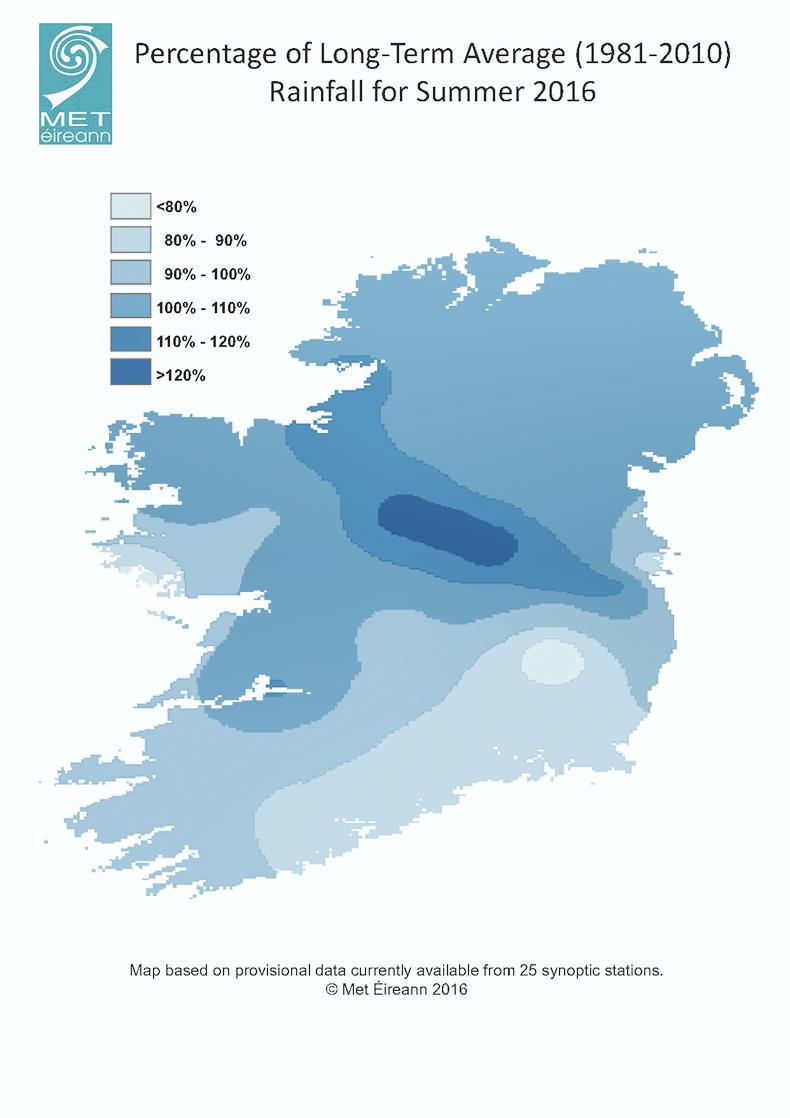The ability to forecast summer rain has become more difficult in recent years according to Met Éireann’s head of forecasting, Gerald Fleming.
“The atmosphere is now carrying more moisture so when it does rain, it comes down in more sporadic bursts,” Fleming said, adding that summer rainfall is in convections, which makes it more intense over a shorter duration. “We are increasingly seeing that kind of rainfall. Those sorts of patterns, or lack of patterns, are the greatest challenge in forecasting. It makes it almost impossible to predict.”
Due to its nature Fleming said it is easier to predict winter weather. In summer, while you know the weather will be changeable in the coming days, there is no way of knowing whether the rain will fall in Ballina or Ballaghadreen.
“Forecasting has got better in the last 15 to 20 years, and there are some set-ups where you can forecast accurately a week in advance,” he said. “What we do is create an analysis of the data.”
In terms of rainfall this summer, nothing has strayed very far from the average, he told the Irish Farmers Journal, but it has been very patchy in different areas. “While down in Wexford and the south it has been notably dry this summer, places like Roscommon and Mayo have had very wet periods,” Fleming said.
Split in rainfall levels
Figures over the summer months, from Met Éireann, show that June, July and August were mild and dull nearly everywhere, and slightly wet in places. Rainfall data shows a clear concentration of rain in the midlands this summer when compared to the long term average (LTA) over the years 1981 to 2010. The south and southeast have experienced a notably drier summer, less than 80% of the LTA, while the north has been wetter than normal.
The percentage of average rainfall values ranged from as low as 72% in Oak Park, Co Carlow, where they experienced the driest summer in nine years, to a high of 129% in Mullingar, Co Westmeath, which received 299mm of rain over the three months. The highest total rainfall was 340.6mm at Newport, Co Mayo.
Mild
Temperatures were mild across most of the country. Nearly all mean temperatures were above normal, with the highest temperatures recorded in mid-July. The summer’s highest maximum temperature was reported as 30.4°C at Mount Dillon, Co Roscommon, on 19 July. The lowest temperature was 2.5°C at Dublin Airport on 3 June.
Sunshine levels this summer were lower than spring. Knock airport had its dullest summer since the station opened in 1996, receiving just 71% of its average sunshine. The highest number of sunshine hours in a day was at Malin Head, Co Donegal, on 2 June with 15.8 hours of sunshine.






 This is a subscriber-only article
This is a subscriber-only article











SHARING OPTIONS: